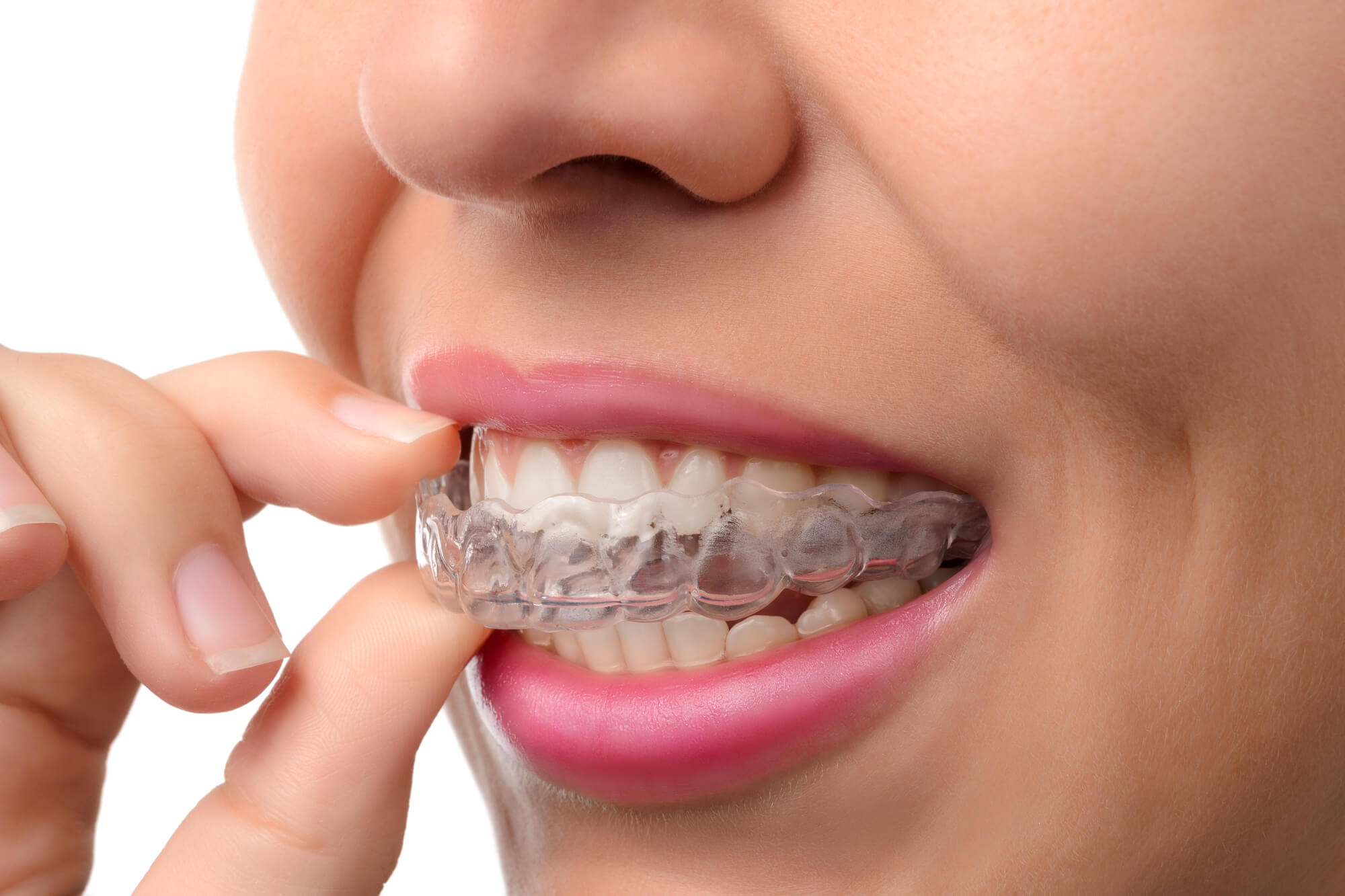Straightening your teeth can be daunting and keep you from fixing your smile. Luckily, there are many orthodontic treatments available to tackle your misalignment issues. Metal braces and Invisalign® in Las Vegas are two options with pros and cons, and diving into their differences can show you which is best for you. Invisalign has revolutionized orthodontic treatment by introducing clear aligners as a modern alternative to traditional braces.
Traditional braces are a reliable method for straightening teeth, but newer orthodontic technologies offer various treatment options beyond traditional braces.
Introduction to Orthodontic Treatment
Orthodontic treatment is a significant investment in one’s dental health and overall well-being. With various options available, including traditional braces and Invisalign aligners, it’s essential to understand the differences and benefits of each. Traditional braces, comprising metal brackets and wires, have been a long-established method for achieving straighter teeth. In contrast, Invisalign aligners offer a modern, discreet alternative for those seeking a more subtle approach to orthodontic treatment. By understanding the pros and cons of each option, individuals can make an informed decision about the right orthodontic treatment for their unique needs.
What Makes Invisalign® Different from Traditional Braces?
Appearance
One of the biggest advantages of Invisalign over traditional braces is that they don’t change your looks. Traditional braces consist of metal wires and brackets a dentist attaches to your teeth. This contraption can be pretty noticeable and make some people feel self-conscious. Ceramic braces are a more discreet alternative to traditional metal braces, offering a less noticeable option for orthodontic treatment.
In contrast, Invisalign® aligners are made of clear plastic, which makes them virtually invisible and discrete. If you’re concerned about your appearance changing, Invisalign® might be a more appealing option. Clear aligners blend seamlessly with the user’s teeth, providing a discreet orthodontic treatment without attracting attention to the smile.
Comfort
Another advantage of Invisalign is that they are comfortable to wear. Traditional braces need to be tight around your teeth to work, exerting pressure on your smile and making you feel pain. On the other hand, Invisalign® uses custom-made plastic aligners that reduce irritation and discomfort compared to the metal brackets and wires of traditional braces, thus providing a more gentle and comfortable orthodontic experience.
Since these clear aligners are also made of smooth plastic, they don’t brush against your inner lips, cheeks, and gums, eliminating any possible discomfort and irritation of traditional braces.
Maintenance and Oral Hygiene
Maintaining good oral hygiene is essential during orthodontic treatment. However, traditional braces can make brushing and flossing difficult, as food particles can get stuck between the wires and brackets. The removability of Invisalign trays facilitates better oral hygiene, as users can easily perform daily dental care activities such as eating, drinking, brushing, and flossing.
If you don’t adopt more thorough practices and visit your dentist, you’re more prone to decay and gum disease as a wearer of braces. Invisalign® aligners are removable, which makes it easier for patients to brush and floss. Invisalign’s detachable design allows users to easily maintain oral hygiene, contrasting it with traditional braces, which can make cleaning teeth more challenging due to their fixed nature.
Simply take your aligners off, follow your oral hygiene routine, and then put them back on when you’re done. Make sure to brush for at least two minutes using a ~soft-bristle toothbrush~ and non-abrasive toothpaste, and floss to prevent plaque and tartar from accumulating in your smile. Proper oral hygiene practices can significantly reduce the risk of plaque buildup and tooth decay.
Treatment Time and Effectiveness
Another difference is that traditional braces might take longer to straighten your teeth than Invisalign®. Braces work by gradually shifting your teeth using wires and brackets, and results might only start showing after a year. Traditional braces offer precise control over tooth movement, making them effective for complex dental issues.
Invisalign® consists of a set of clear aligners to gradually move your teeth and bite toward the desired position, which can make the treatment time shorter than traditional braces. Invisalign utilizes an innovative aligner system that allows for incremental tooth movement through a carefully mapped treatment plan.
In terms of effectiveness, both treatments do an excellent job of straightening teeth. However, traditional braces have the added benefit of being able to treat a broader range of orthodontic problems than Invisalign®. Dentists recommend clear aligners to patients who have slight misalignment issues, such as:
- ~Overcrowding~
- Tooth gaps
- An ~overbite~
- An underbite
Cost
Cost is a crucial factor when choosing between traditional braces and Invisalign®. The first treatment option can be more affordable than the second, depending on the patient’s orthodontic needs. However, it’s worth noting that some dental insurance plans cover a portion of the cost for both traditional braces and Invisalign®.
Traditional braces can be more cost-effective compared to alternative treatments, highlighting the financial aspect of orthodontic options and emphasizing the affordability for a wider patient base.
Additionally, many orthodontic offices offer payment plans to help make the cost more manageable. If you believe comfort and aesthetics are a priority during your orthodontic treatment, then the cost of your Invisalign® might be worth it.
Diet
Finally, an advantage of Invisalign® over traditional braces is that you don’t have to avoid certain foods during treatment. With metal braces, certain foods can damage the brackets and wires, leading to longer treatment times and additional costs.
Since Invisalign® aligners are removable, you can take them out during meals to keep them free from harm. This benefit allows you to eat whatever you want without worrying about breaking or warping your orthodontic appliances.
You can enjoy sticky or hard foods that would be off-limits with traditional braces, such as popcorn, nuts, and gum. However, it is still important to avoid sticky foods when wearing aligners to prevent damage and ensure the effectiveness of your treatment.
Remember to brush your teeth before putting your Invisalign® aligners back in after a meal. Food particles can get trapped between your teeth and the aligners, leading to bacteria buildup and potential oral health problems. Other practices you can incorporate include:
- Visiting your dentist ~twice a year~
- Flossing
- Not smoking or chewing tobacco
- Not biting your nails
- Not grinding your teeth
Making an Educated Decision
When considering orthodontic treatment, it’s crucial to weigh the advantages and disadvantages of each option. Invisalign aligners, for instance, offer a virtually invisible appearance, making them an attractive choice for those who want to undergo orthodontic treatment without drawing attention to their smile. Traditional braces, on the other hand, provide a more comprehensive treatment approach, suitable for complex dental issues. By evaluating factors such as treatment duration, cost, and lifestyle considerations, individuals can make an educated decision about the right orthodontic treatment for their needs. It’s also essential to consider the importance of oral hygiene and how each option may impact daily dental care routines.
Consultation with an Orthodontist
A consultation with a qualified orthodontist is the first step in determining the most suitable orthodontic treatment. During this consultation, the orthodontist will assess the individual’s dental health, discuss their concerns and goals, and recommend a personalized treatment plan.
This plan may include traditional braces, Invisalign aligners, or a combination of both. The orthodontist will also address any questions or concerns, providing a comprehensive understanding of the treatment process and what to expect. By working closely with an orthodontist, individuals can ensure they receive the most effective and efficient orthodontic treatment for their unique needs.
Case Complexity and Suitability
The suitability of Invisalign aligners or traditional braces depends on the complexity of the dental issues. Invisalign aligners are often recommended for mild to moderate orthodontic issues, such as crooked teeth or minor bite problems. Traditional braces, on the other hand, are better suited for more complex cases, including severe misalignments or bite abnormalities. The orthodontist will assess the individual’s dental health and determine the most suitable treatment approach. In some cases, a combination of both Invisalign aligners and traditional braces may be necessary to achieve the desired treatment outcomes. By understanding the complexity of the dental issues and the suitability of each option, individuals can make an informed decision about their orthodontic treatment.
Orthodontic Treatment and Insurance
Many dental insurance plans cover orthodontic treatment, including traditional braces and Invisalign aligners. However, the extent of coverage may vary depending on the individual’s policy and the complexity of the treatment. It’s essential to consult with the insurance provider to understand the coverage and any out-of-pocket expenses. Additionally, some orthodontists may offer financing options or payment plans to help make orthodontic treatment more affordable. By understanding the insurance coverage and financing options, individuals can make a more informed decision about their orthodontic treatment and plan accordingly. Regular dental check-ups and diligent oral hygiene practices are also crucial in maintaining good dental health during and after orthodontic treatment.
Looking to Enhance Your Smile with Invisalign® in Las Vegas?
While traditional braces and Invisalign® have unique advantages, both can help you achieve an incredible smile. Clear aligners are usually the more attractive option for many, especially adults. Some benefits that make invisible aligners stand out are that they are virtually invisible, comfortable, easy to maintain, and don’t pose any food restrictions.
At Dee for Dentist, we provide orthodontic treatments to help you achieve a beautiful, healthy smile you can be proud of for years to come. Contact us today at (702) 586-7800 or fill out a contact form to learn more about our services and book an appointment!
*Invisalign®, the Invisalign logo, and iTero®, among others, are trademarks and/ or service marks of Align Technology, Inc. or one of its subsidiaries or affiliated companies and may be registered in the U.S. and/or other countries.
Consulting with qualified dental professionals is crucial to ensure comprehensive treatment outcomes. Qualified orthodontists have the expertise to provide precise control over tooth movement, resulting in predictable and thorough results. This level of care is particularly important for individuals with more complex adjustment needs, as it underscores the reliability and effectiveness of traditional orthodontic treatments.
Patient compliance is a critical factor in achieving successful orthodontic treatment outcomes. The duration and effectiveness of treatments like Invisalign and traditional braces are significantly influenced by how diligently patients adhere to their treatment plans. This includes regular dental visits and consistent use of aligners. Braces, in particular, are a universal treatment effective for various dental issues, ranging from minor to complex cases. They offer significant results even in challenging situations, making them a reliable option for many patients.

